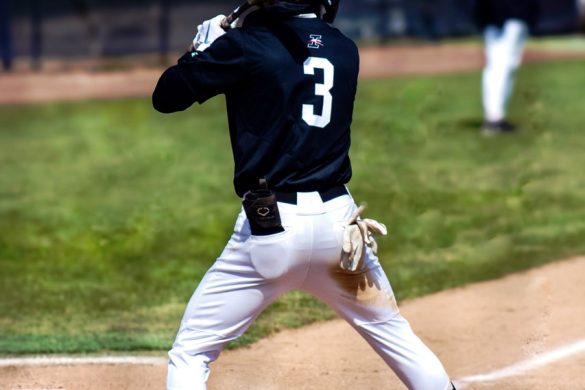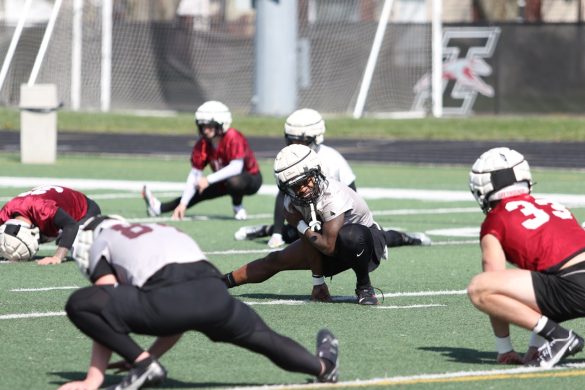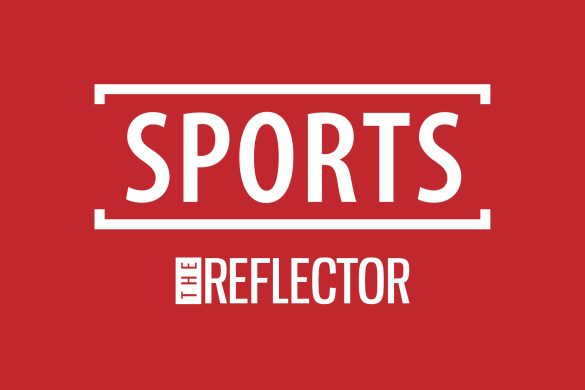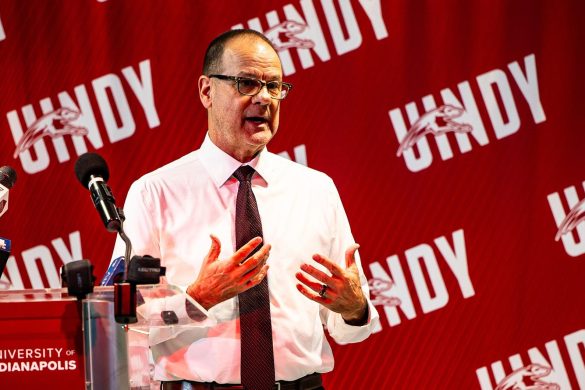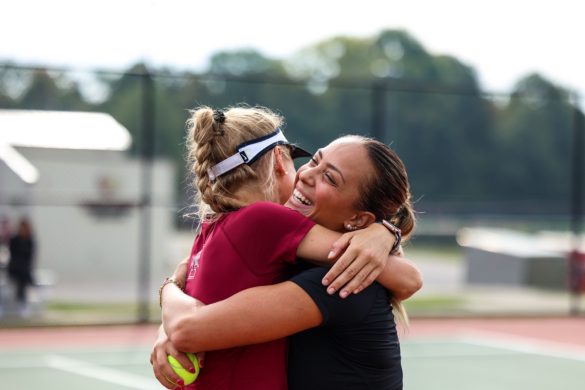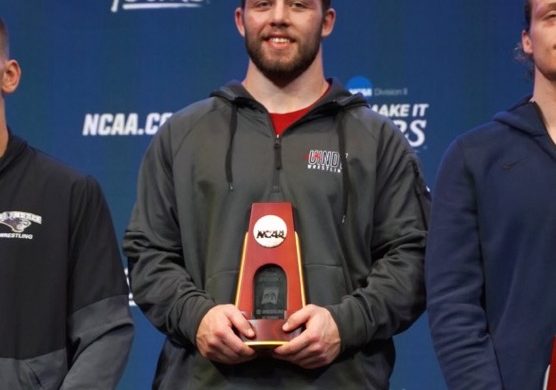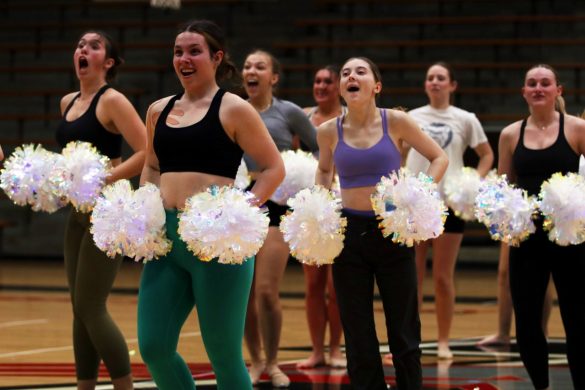For part of the year, University of Indianapolis athletes compete in games, whether on the field, court, mat, track or in the pool. But when they are not competing, they are training. Strength and Conditioning Coach Steve Barrick is in charge of the athletes’ workouts, alongside his assistants: coach Ryan Grubbs, graduate student Matt Wagner and two interns.
“As the strength and conditioning staff, we take all of our athletes [in] every sport through mandatory workouts,” Barrick said. “So that involves weight training, any kind of flexibility and mobility work, any kind of conditioning, any kind of recovery [and] regeneration type work, so speed development [and] change in direction anything that falls under the categories of athletic development. So we’re here to basically prepare our athletes to perform in their sport. … We work to make sure [that] we keep them [the athletes] healthy and that we get them on the field, and they’re able to preform at a high level.”
Barrick has been at UIndy as the strength and conditioning coach for six years now. Along the way, he has built relationships with his co-workers and with the athletes. Barrick strongly believes in saying what needs to be said rather than saying what people want to hear. Junior linebacker Rob Dury values the honesty Barrick provides to UIndy athletes.
“He’s a guy that will tell you when you’re doing well and tell you when you’re not doing well. But at the same time, he knows when to say the right things to get you fired up and ready to work out, but also, if you’re struggling, how to help you be better and improve,” Dury said. “… I had the opportunity to work out here as a true freshman … [and] I’m from Indianapolis, so this is really my fourth year with him [Barrick]. Going into freshmen year, I really developed a great bond with him. He’s a great guy. I’m in there all the time talking to him. He’s kind of like another father you have here in the weight room, and he’s just always somebody you can go in and talk to. He’s helped me a lot personally, like grow as a person and get a lot faster and stronger and improve myself as a player.”
Barrick personally sees multiple benefits in being the strength coach.
“The benefit is just the interaction with the athletes on a daily basis. And really, developing those relationships with the athletes is very, very important to me,” he said, “and making sure that we offer a service where we can take care of them from a physical standpoint [and] mental strength … [and] emotional things. We’re like counselors also. We wear a bunch of different hats in this job. No two days are alike. We’ve always got something going on that might be different. So from that end, it’s really cool. … We want to help them be as successful as they possibly can.”
Whether athletes are in-season or out-of-season, they are still striving to be successful through workouts, Barrick said.
“In the off-season, we’re going to spend more time in the weight room. So we’re going to be in the weight room three to four times a week for an hour to an hour and a half, somewhere in that range,” he said. “Our focus is always going to be a little different in the off-season, [which is] where we’re going to focus on strength, size [and] power. The emphasis changes per phase. In the in-season, now, our volume is going to be a lot less. So we’re only going to be in the weight room twice a week for a half hour. We’re going to try and get as much work in as we can during that time we have. [During the season], our volume will decrease a little bit, our intensity in the weight room will decrease and obviously our time in here will decrease as well. So we want to make sure that we’re really pushing to continue to make gains and strength and flexibility and mobility and all that.”
Senior softball pitcher Morgan Foley has been a Greyhound for four years and has seen herself not only grow physically but mentally, thanks to the time she has put in in the weight room.
“I came in here without lifting. I mean, yeah, I could pitch, but it [lifting] definitely helped me build the strength and endurance to last games. … I came in and had no muscle. I had never lifted a weight in my life. Mentally, I did not know I could be this mentally strong,” Foley said. “Steve definitely prepares us mentally in the weight room, just if we have a bad lift, getting on us and making sure we know how to fix that for the next time and how to be strong in there and how to push yourself through difficult lifts. Our coach is definitely a big part of that, reading us mental toughness books. But like physically, I have improved a lot. Just off of his program and the different percentages we base things off of.”
After four years here, Foley understands how motivation from Barrick and Head Softball Coach Melissa Frost has helped the team.
“I can honestly say that I think we’re the most fit team in DII because of how much he [Barrick] pushes us and how much [our] coach pushes us,” Foley said.
According to Barrick, some strength and conditioning coaches feel comfortable implementing different workouts based on a specific sport, but at UIndy they have a different way of thinking.
“We have a philosophy that we go by when it comes to lifting. I’ve got to make sure, as a strength and conditioning coach that I teach what I know well. I’m not going to have athletes do something that I’m not very good at coaching or teaching just because of what sport they play. And I don’t think that’s the way to go,” he said. “Some strength coaches out there think that is the way to go, but I really don’t. [At UIndy] every team is going to do some sort of Olympic lift, so they’re [the athletes] going to do some sort of exercises where they’re producing a lot of power and a lot of force. Then they’re all going to have similar strength movements, whether it be squat, bench [or] deadlift, those kind of things. Then the auxiliary movements, that’s where we might change things here and there so we do have some subtle differences between different teams, and then we [can] even boil that down to individuals. … So yeah, it’s individualized to a certain point. … If I’ve got a very, very young team, I may do a lot more volume and a lot more developmental work, whereas if I’ve got a team that’s got a lot of seniors and things like that, we might change the way we do things a little bit. I change it based on a lot of different variables.”
Barrick said the great work put in by the athletes, on and off the field, is what makes being at UIndy great for him.
“We’ve got a lot of really, really, really good kids, great coaches [and] great administration. It is an absolute joy to come to work, because of the people you’re surrounded by at this university,” he said.
With all of his experience at UIndy, Barrick has plenty of stories to tell. And sometimes that gets to people.
“You can talk to people at other universities, and they have a lot of complaints and things like that, and I really don’t have those,” Barrick said. “I think a lot of strength coaches, a lot of coaches [and] a lot of people from other schools get tired of me talking positively all [of] the time about my experiences here at UIndy, and so I think that gets to them sometimes. I’m surrounded by great kids and just a great athletic department in general, and that starts all the way at the top. … I feel like I’m very blessed to be here.”
